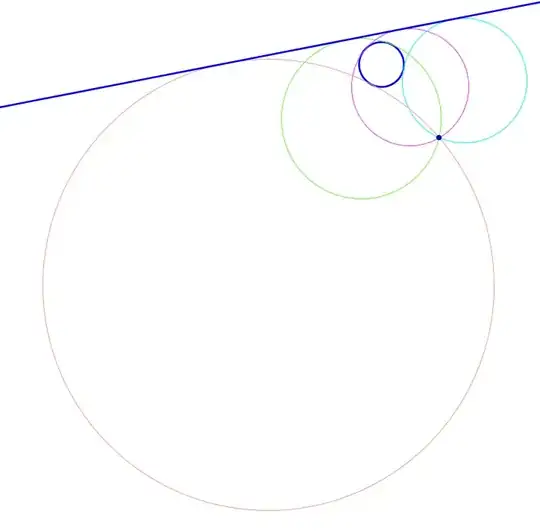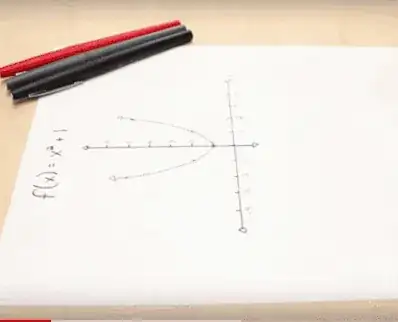The term "imaginary" is somewhat disingenuous. It's a real concept, with real (at least theoretical) application, just like all the "real" numbers.
Think back to that algebra class. You were asked to solve a polynomial equation; that is, find all the values of X for which the entire equation evaluates to zero. You learned to do this by polynomial factoring, simplifying the equation into a series of first-power terms, and then it was easy to see that if any one of those terms evaluated to zero, then everything else, no matter its value, was multiplied by zero, producing zero.
You tried this on a few quadratic equations. Sometimes you got one answer (because the equation was $y=ax^2$ and so the only possible answer was zero), sometimes you got two (when the equation boiled down to $y= (x\pm n)(x \pm m)$, and so when $x=-m$ or $x=-n$ the equation was zero), and a couple of times, you got no answers at all (usually, an equation that breaks down to $y=(x+n)(x+m)$ doesn't evaluate to zero at $x=-m$ or $x=-n$).
In your algebra class, you're told this just happens sometimes, and the only way to make sure any factored term $(x\pm k)$ represents a real root is to plug in $-k$ for $x$ and solve. But, this is math. Mathematicians like things to be perfect, and don't like these "rules of thumb", where a method works sometimes but it's really just a "hint" of where to look. So, mathematicians looked for another solution.
This leads us to application of the quadratic formula: for $ax^2 + bx + c = 0$, $x=\dfrac{-b \pm \sqrt{b^2-4ac}}{2a}$. This formula is quite literally the solution of the general form of the equation for x, and can be derived algebraically. We can now plug in the coefficients, and find the values of $x$ where $ax^2 + bx + c=0$. Notice the square root; we're first taught, simply, that if $b^2-4ac$ is ever negative, then the roots you'd get by factoring the equation won't work, and thus the equation has no real roots. $b^2-4ac$ is called the determinant for this reason.
But, the fact that $b^2-4ac$ can be negative remains a thorn in our side; we want to solve this equation. It's sitting right in front of us. If the determinant were positive, we would have solved it already. It's that pesky negative that's the problem.
Well, what if there was something we could do, that conforms to the rules of basic algebra, to get rid of the negative? Well, $-m = m*-1$, so what if we took our term that, for the sake of argument, evaluated to $-36$, and made it $36*-1$? Now, because $\sqrt{mn} = \sqrt{m}\sqrt{n}$, $\sqrt{-36} = \sqrt{36}\sqrt{-1} = 6\sqrt{-1}$. We've simplified the expression by removing what we can't express as a real number from what we can.
Now to clean up that last little bit. $\sqrt{-1}$ is a common term whenever the determinant is negative, so let's abstract it behind a constant, like we do $\pi$ and $e$, to make things a little cleaner. $\sqrt{-1} = i$. Now, we can define some properties of $i$, particularly a curious thing that happens as you raise its power:
$$i^2 = \sqrt{-1}^2 = -1$$
$$i^3 = i^2*i = -i$$
$$i^4 = i^2*i^2 = -1*-1 = 1$$
$$i^5 = i^4*i = i$$
We see that $i^n$ transitions through four values infinitely as its power $n$ increases, and also that this transition crosses into and then out of the real numbers. Seems almost... circadian, rotational. As Clive N's answer so elegantly explains it, that's what imaginary numbers represent; a "rotation" of the graph through another plane, where the graph DOES cross the $x$-axis. Now, it's not actually really a circular rotation onto a new linear z-plane. Complex numbers have a real part, as you'd see by solving the quadratic equation for a polynomial with imaginary roots. We typically visualize these values in their own 2-dimensional plane, the complex plane. A quadratic equation with imaginary roots can thus be thought of as a graph in four dimensions; three real, one imaginary.
Now, we call $i$ and any product of a real number and $i$ "imaginary", because what $i$ represents doesn't have an analog in our "everyday world". You can't hold $i$ objects in your hand. You can't measure anything and get $i$ inches or centimeters or Smoots as your result. You can't plug any number of natural numbers together, stick a decimal point in somewhere and end up with $i$. $i$ simply is.
As far as having use outside "ivory tower" math disciplines, a big one is in economics; many economies of scale can be described as a function of functions of the number of units produced, with a cost term and a revenue term (the difference being profit or loss), each of these in turn defined by a function of the per-unit sale price or cost and the number produced. This all generally simplifies to a quadratic equation, solvable by the quadratic formula. If the roots are imaginary, so are the breakeven points (and your expected profits).
Another good one is in visualizations of complex numbers, and of their interactions when multiplied. The first one I was exposed to is a well-known series set, produced by taking an arbitrary complex number, squaring it ($(a+bi)^2 = (a+bi)(a+bi) = a^2 + 2abi + b^2i^2 = a^2-b^2 + 2abi$), and then adding back its original value. Repeated to infinity with this number, the series either converges to zero or diverges to infinity (with a few starting numbers exhibiting periodicity; they'll jump around infinitely between a finite number of points much like $i$ itself does). The set of all complex numbers for which the series does not diverge is the Mandelbrot set or M-set, and while the area of the graph is finite, its perimeter is infinite, making the graph of this set a fractal (one of the most highly-studied, in fact).
The Mandelbrot set can in turn be defined as the set of all complex numbers $c$ for which the Julia set $J(f)$ of $f(z)=z^2 + c \to z$ is connected. A Julia set exists for every complex polynomial function, but usually the most interesting and useful sets are the ones for values of $c$ that belong to the M-set; Julia fractals are produced much the same way as the M-set (by repeated iteration of the function to determine if a starting $z$ converges or diverges), but $c$ is constant for all points of the set instead of being the original point being tested. You can define Julia sets with all sorts of fractal shapes. These fractals, more accurately the iterative evaluation behind them, are used for pseudorandom number generation, computer graphics (the sets can be plotted in 3-d to create landscapes, or they can be used in shaders to define complex reflective properties of things like insect shells/wings), etc.

